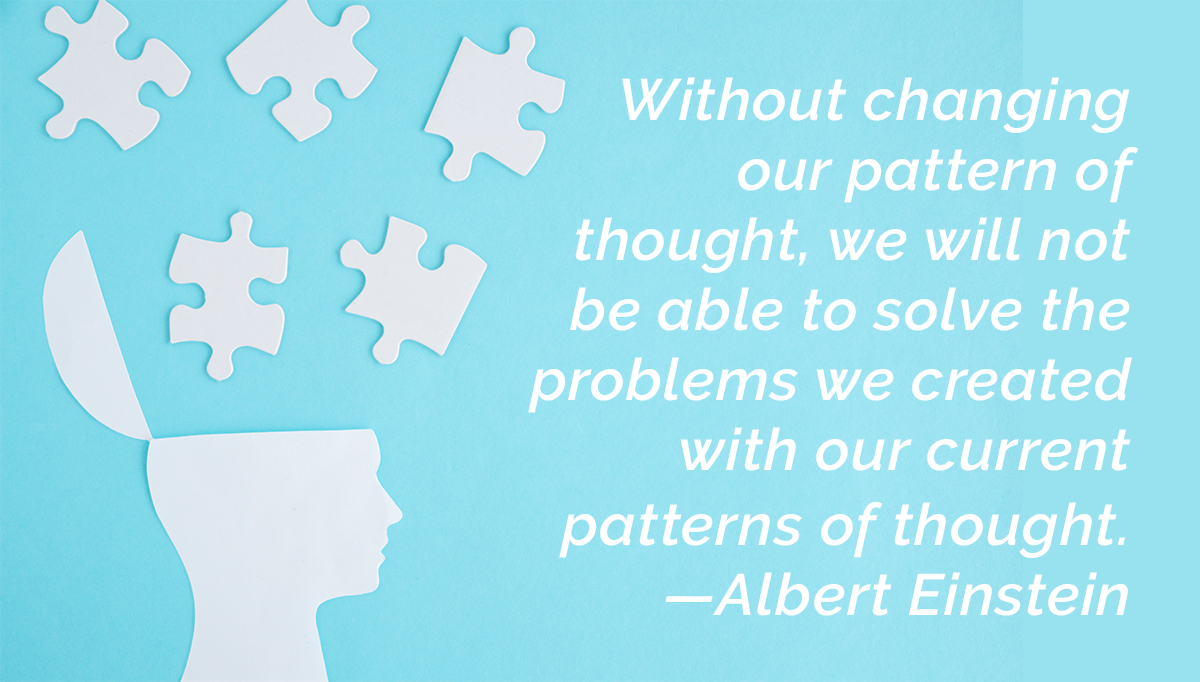When tackling a problem, it’s easier to analyze its pieces and parts and try to solve them one by one than it is to try and understand the whole situation or system. However, this approach rarely works because analyzing the parts does not help us understand how the system in which the problem is embedded works nor how it keeps the problem you want to solve in place.
Systems thinking, on the other hand, seeks to understand why and how the system works the way it does. It involves investigating the interdependencies and interrelationships among the parts including and most especially how people’s thinking and actions create and maintain the whole system.
Although much has been written about the advantages of systems thinking, it seems that people still prefer to use analytical, pieces-and-parts approaches that rarely lead to effective, sustainable solutions.
Why do we continue in this fashion? Because the human brain prefers what is simple, certain and familiar. We are more comfortable tackling things in terms of cause and effect. We think this makes issues understandable and within our control. Our need for certainly also leads us to prematurely grab onto piecemeal solutions.
Systems thinking can be uncomfortable. It opens us up to uncertainty and complexity as we sleuth our way through dynamic and seemingly out-of-control systems. One of the trickiest parts of trying to understand a system is figuring out how people’s assumptions, beliefs, values, and priorities keep the system itself in place.
Donella H. Meadows, the pioneering environmental scientist, teacher, and writer, identified Twelve Leverage Points to Intervene in a System. Of those twelve, she indicates that the most effective leverage points are also the most challenging to shift or move. This is because they involve:
- Changing people’s mindsets or beliefs and values that determined how the system arose. For example, one powerful belief is that human beings have dominion over the natural world, that nature is simply a stock of resources that can be converted to human purpose. Imagine how the resource extraction systems around the world would be different if they arose from the belief that we are an interdependent part of the natural world.
- Testing whether the stated goals of the system actually reflect what the system is doing and achieving. For example, the health care system seems to be more about treating sickness and disability than caring about health.
- Changing current structures, behaviors, and rules of the system. For example, to better serve patients and their families, a teaching hospital changed its structure from 100+ specialty practices to 18 patient care centers that incorporated outpatient services. In another instance, to expedite creating products from exploratory research, a company created cross-functional project teams and defined the values and behaviors required to support their success. They revamped the performance management system to reward those values and behaviors.
You can explore all twelve leverage points here.
Working with the Twelve Leverage Points, i.e., to effectively tackle systemic issues requires generating collective insight.
Here are six keys to creating collective insight.
- Engage system leaders and thought leaders in a conversation about how the issue at hand is part of a larger system.
- Convene stakeholders from the various parts of the system who have different perspectives and experiences with the system in question.
- Identify the larger system of which the issue is a part and the elements of the whole system.
- Introduce leaders and other stakeholders to systems thinking and the necessity of working with people from various parts of the system to understand the whole.
- Collectively explore how the elements of the system interconnect, hold the system and the issue in place.
- Determine which leverage points you want to shift, how, and with whom.
Systems thinking might be more challenging than analyzing a situation through its pieces and parts. It will likely take more time upfront but save time, money, and emotional coin down the road. It also increases the likelihood that you will actually solve the problem you wanted to solve in the first place, along with many others.


Very timely post, Mary. I have a mindfulness video I’ll send by email that is very compatible with this. Hugs, Ashton
Dear Mary, This idea of approach is so relevant to the work we do with Space and sound around. Thank you. I love John O’Donahue and BEAUTY.
Sending love, Linda
First should be establishment of a fair and just enviroment created by way of a code of ethics. This foundation made up of character traits including but not limited to loalty,justice,ambition,pride,self-control,confidence,compassion nd appreiciation. Clairification of service offered and it’s goals
+ what is offered and to whom
+ diagnose problem
+ evaluate job performances
skills,intrests,goals of employe+encourage/recognize/…fits any type business.